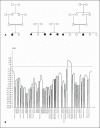Nephrocalcinosis (enamel renal syndrome) caused by autosomal recessive FAM20A mutations
- PMID: 23434854
- PMCID: PMC3782194
- DOI: 10.1159/000349989
Nephrocalcinosis (enamel renal syndrome) caused by autosomal recessive FAM20A mutations
Abstract
Background/aims: Calcium homeostasis requires regulated cellular and interstitial systems interacting to modulate the activity and movement of this ion. Disruption of these systems in the kidney results in nephrocalcinosis and nephrolithiasis, important medical problems whose pathogenesis is incompletely understood.
Methods: We investigated 25 patients from 16 families with unexplained nephrocalcinosis and characteristic dental defects (amelogenesis imperfecta, gingival hyperplasia, impaired tooth eruption). To identify the causative gene, we performed genome-wide linkage analysis, exome capture, next-generation sequencing, and Sanger sequencing.
Results: All patients had bi-allelic FAM20A mutations segregating with the disease; 20 different mutations were identified.
Conclusions: This autosomal recessive disorder, also known as enamel renal syndrome, of FAM20A causes nephrocalcinosis and amelogenesis imperfecta. We speculate that all individuals with biallelic FAM20A mutations will eventually show nephrocalcinosis.
Copyright © 2013 S. Karger AG, Basel.
Figures
References
-
- Kleta R, Bockenhauer D. Bartter syndromes and other salt-losing tubulopathies. Nephron Physiol. 2006;104:p73–p80. - PubMed
-
- Vivante A, Lotan D, Pode-Shakked N, Landau D, Svec P, Nampoothiri S, Verma I, Abu-Libdeh A, Bockenhauer D, Dekel B, Anikster Y. Familial autosomal recessive renal tubular acidosis: importance of early diagnosis. Nephron Physiol. 2011;119:p31–p39. - PubMed
-
- Bockenhauer D, Feather S, Stanescu HC, Bandulik S, Zdebik AA, Reichold M, Tobin J, Lieberer E, Sterner C, Landoure G, Arora R, Sirimanna T, Thompson D, Cross JH, van't Hoff W. Al Masri O. Tullus K. Yeung S. Anikster Y. Klootwijk E. Hubank M. Dillon MJ. Heitzmann D. Arcos-Burgos M. Knepper MA. Dobbie A. Gahl WA. Warth R. Sheridan E. Kleta R. Epilepsy, ataxia, sensorineural deafness, tubulopathy, and KCNJ10 mutations. N Engl J Med. 2009;360:1960–1970. - PMC - PubMed
-
- Carr IM, Sheridan E, Hayward BE, Markham AF, Bonthron DT. IBDfinder and SNPsetter: tools for pedigree-independent identification of autozygous regions in individuals with recessive inherited disease. Hum Mutat. 2009;30:960–967. - PubMed
Publication types
MeSH terms
Substances
Grants and funding
LinkOut - more resources
Full Text Sources
Molecular Biology Databases


